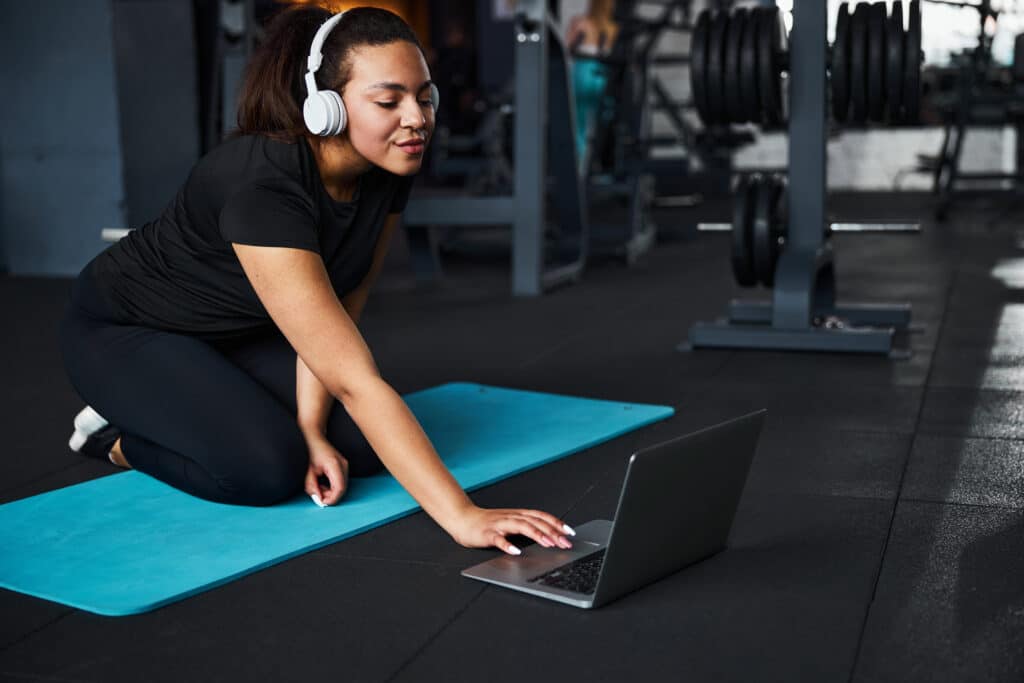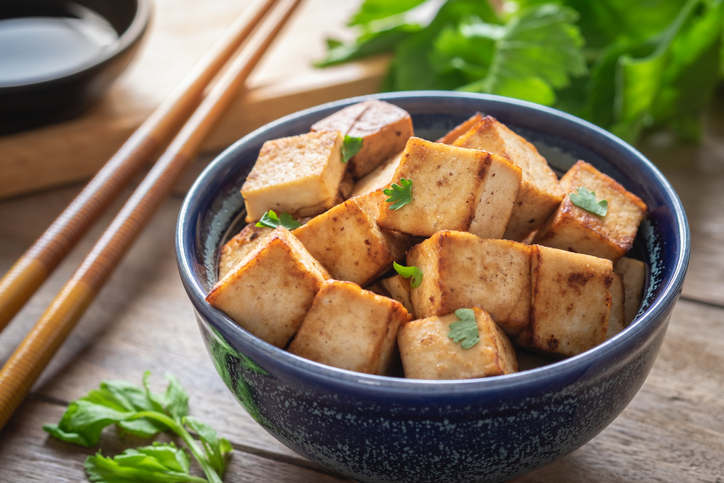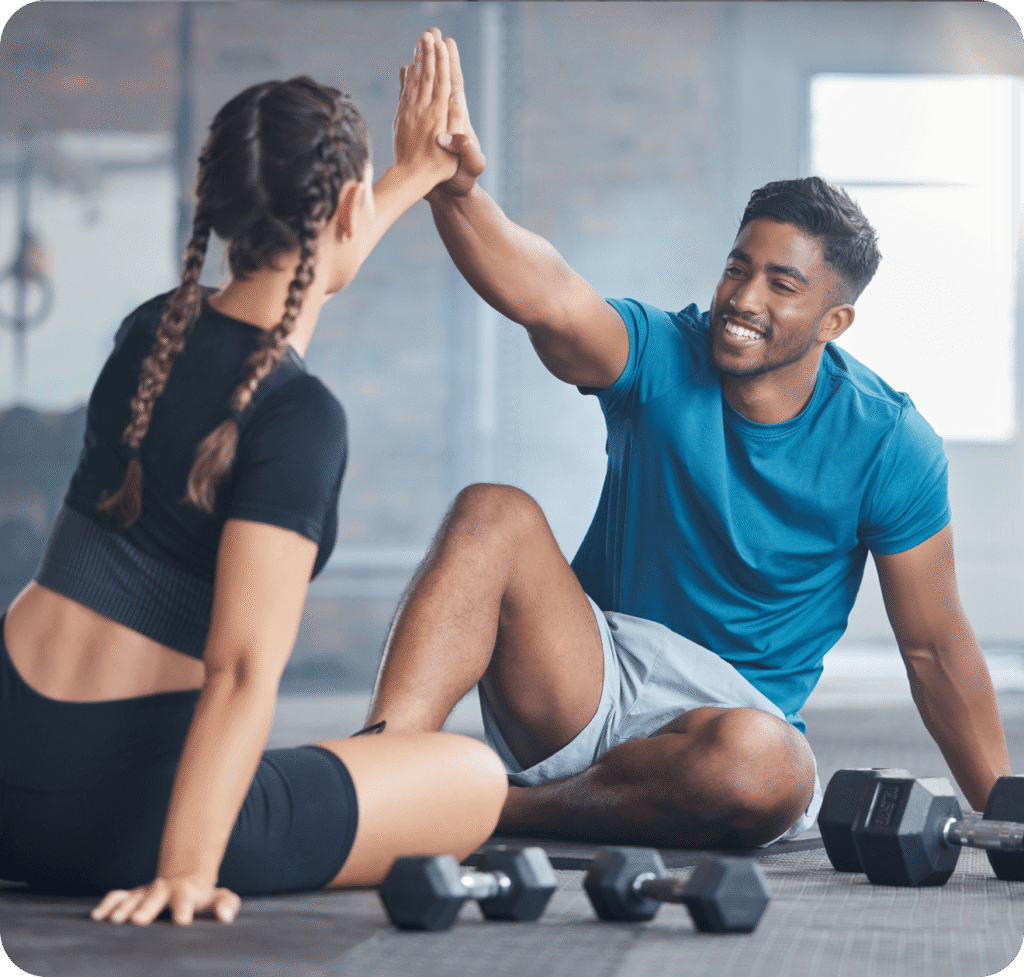As a nutritionist, you already spend hours planning meals that align with your clients’ training goals. But keeping up with demand as your business scales and constantly searching for inspiration for new meal ideas can be a drain on your time and mental resources.
Artificial intelligence is changing that. With the right approach, AI can help you build balanced, custom recipes in minutes, saving you time while maintaining professional standards. And when used alongside platforms like My PT Hub, it can strengthen collaboration between you and the trainers you support.
Here’s how to make AI your recipe-building assistant without losing your expertise in the process.
Contents:
- Why AI recipe generation works for nutritionists
- Choosing the right AI tools for recipe creation
- Writing effective prompts for recipe creation
- Best practices for using AI responsibly in nutrition
- How to use AI recipes to support your work, not over take it.

1. Why AI recipe generation works for nutritionists
Save hours on manual work
AI can draft complete recipes ,ingredients, quantities, methods, and nutrition data in seconds. Instead of researching, writing, and calculating everything manually, you can generate the structure and spend your time refining accuracy and flavour.
Scale your service
If you work with multiple personal trainers, you can quickly create varied, goal-based recipes for each PT’s clients. It’s an efficient way to maintain quality while supporting more people.
Keep your expertise front and centre
AI doesn’t replace your knowledge. It simply supports it. You’ll still validate nutrition values, assess ingredients for dietary safety, and align recipes with evidence-based practice; AI just speeds up the creative process.
2. Choosing the right AI tools for recipe creation
You don’t need specialised software to start building recipes with AI. Most mainstream tools already have the intelligence and flexibility to generate professional-quality recipes when guided properly.
| Platform | Why it works for nutritionists | Best use |
| ChatGPT (OpenAI) | Excellent at understanding structured prompts and generating balanced recipes with macros, ingredients, and cooking instructions. A great all-round tool for personal trainers as well. | Building recipe drafts, adjusting for macros, and creating collections. |
| Google Gemini | Great for integrating recipes into documents, spreadsheets, or shared libraries. | Formatting and storing recipe databases or macro sheets. |
| Claude (Anthropic) | Handles long-form context well, perfect for refining recipe tone or scaling content for multiple PTs. | Editing, rewriting, or producing large recipe sets. |
| Microsoft Copilot | Integrates directly with Word and Excel, ideal for those managing plans in Microsoft Office. | Creating formatted meal plans or templated recipes. |
| Notion AI or ClickUp AI | Useful for organising recipe workflows, storing prompts, and managing revisions. | Tracking feedback and maintaining recipe libraries. |
Each platform offers slightly different strengths. Choose one that fits naturally into your existing workflow, whether you prefer structured spreadsheets or conversational text prompts.
Looking for more tips on AI tooling for personal trainers? Check out our guide to the best AI tools for personal trainers.

3. Writing effective prompts for recipe creation
AI only performs as well as the prompt you feed it. The clearer you are about the nutritional goals, the better the output. If you want some help with helpful personal trainer AI prompts, read our guide here.
Here’s how to write strong prompts that produce professional-grade recipes:
Core structure of a strong recipe prompt
- Purpose: Meal type and context (e.g. post-workout lunch, low-carb dinner).
- Macros: Specify calorie range and macro targets.
- Dietary requirements: Include allergies, preferences, and restrictions.
- Ingredients: Suggest main proteins, vegetables, and grains.
- Output format: Request ingredients (with weights), cooking steps, and nutritional breakdown per serving.
Prompt 1: The macro-targeted lunch
Prompt:
“Create a 500 kcal lunch recipe with around 40 g protein, 45 g carbs, and under 15 g fat. Use lean chicken, whole grains, and vegetables. Include ingredient weights, cooking steps, and full nutrition breakdown.”
Why it works:
This prompt clearly sets numerical targets (calories and macros), plus ingredient types. AI tools respond well to structure ,so giving macro numbers ensures better alignment with PT programmes.
Prompt 2: The dietary restriction scenario
Prompt:
“Generate a 450 kcal dinner recipe suitable for a lactose-intolerant vegetarian client. Include protein alternatives such as lentils or tofu, and list preparation steps.”
Why it works:
This shows how AI handles exclusions. Stating restrictions early prevents the tool from defaulting to unsuitable ingredients. It also forces substitution logic, an essential test for recipe realism.
Prompt 3: The time-efficient client
Prompt:
“Create three dinners under 600 kcal each that take no longer than 20 minutes to prepare. Include quick-cook methods and minimal ingredients.”
Why it works:
Perfect for clients who struggle with time. You’re training the AI to consider practicality, not just nutrition, by setting preparation limits.
Prompt 4: The training-specific meal
Prompt:
“Build a post-workout dinner for muscle recovery: around 550 kcal, 40 g protein, moderate carbs, and low fat. Include slow-digesting carbs and antioxidants.”
Why it works:
Adding context (“post-workout”) helps AI tailor nutrient choices, for example, prioritising complex carbs and recovery foods like berries or sweet potatoes.
Prompt 5: The culturally-inspired plan
Prompt:
“Create a 2,000 kcal daily meal plan inspired by Mediterranean cuisine, split across breakfast, lunch, dinner, and a snack. Keep a balance between protein, fats, and carbs.”
Why it works:
AI can emulate culinary styles, which ensures the recipes remain appealing and culturally relevant while still hitting nutrition targets.

Prompt 6: The budget-friendly plan
Prompt:
“Generate a week of dinners under $10 per serving, each around 500 kcal, using ingredients commonly available in US supermarkets.”
Why it works:
It encourages cost-conscious planning. Including price cues (“under $10”) makes AI prioritise accessible ingredients, supporting personal trainers with clients who need affordable options.
Prompt 7: The client-specific adaptation
Prompt:
“Take the previous recipe and adjust it for a pescatarian diet. Replace meat with fish and recalculate macros.”
Why it works:
This demonstrates iterative prompting ,showing AI how to refine existing outputs rather than starting fresh. Great for building variations for multiple clients.
Prompt 8: The family-friendly meal
Prompt:
“Create a family dinner recipe that serves four, under 2,400 kcal total. Balanced macros per serving, easy to cook, and suitable for children.”
Why it works:
Here, you’re asking AI to scale a recipe and simplify it, which is useful for nutritionists who coach parents or families.
Prompt 9: The plant-based athlete
Prompt:
“Generate a vegan meal plan for a 2,200 kcal day with 120 g protein. Use high-protein plant sources like lentils, tofu, tempeh, and seitan. Include three meals and two snacks.”
Why it works:
Plant-based diets require careful macro control. This prompt directs AI to focus on protein density and portion detail, preventing low-protein suggestions.
Prompt 10: The visual recipe brief
Prompt:
“Write a one-pot high-protein dinner recipe that could be used for social media. Include cooking instructions and a short, catchy description under 40 words.”
Why it works:
This combines recipe creation with marketing thinking. Great for fitness coaches and nutritionists who want to publish quick, visually engaging content.
These examples show how specific inputs produce precise, usable outputs. Always include numeric targets (e.g. calories, grams) and meal context (goal, timing, or diet type).

4. Best practices for using AI responsibly in nutrition
AI is a powerful tool, but professional judgment must always come first.
- Always review nutrition data. AI-generated numbers can be approximate; verify key metrics with a trusted database or your own software.
- Prioritise client safety. Never use AI to create medical or therapeutic diets without professional review.
- Document your process. Keep records of your prompts and sources to maintain accountability.
- Keep your tone human. Even when AI does the groundwork, ensure your personality, experience, and care come through in the final copy.
- Meal plans should take priority. Make sure as a whole your meal plan makes sense together, if planning recipes make sure they work together as a whole.
In short, AI can support creativity and efficiency, but your expertise ensures accuracy, safety, and personalisation. Always check results with against your own expertise and/or a nutrition coaching tool like My PT Hub’s nutrition tracker.
How to use AI recipes to support your work, not over take it.
AI can transform the way you design nutrition plans, not by replacing your skill, but by extending it. The more precisely you guide it, the better it supports your workflow, freeing up time to focus on the human side of coaching.
Start small: create one recipe, refine it, and build from there. With practice, you’ll have a system that saves time, maintains quality, and strengthens your collaboration with personal trainers.